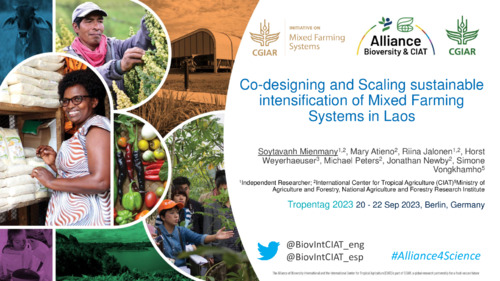Co-designing and scaling sustainable intensification of mixed farming systems in Laos
For over a decade, rural Lao households have been undergoing a transformation from subsistence-oriented production systems to agricultural commercialization, facilitated by a series of Lao government policies opening the economy to international markets coupled with improved connectivity. The extent and depth of this process is accelerating, particularly in upland (non-paddy) farming systems that were formerly part of a swidden landscape. Sustainable intensification of these mixed crop-tree-livestock systems (mixed farming systems, MFS) is critical for competitiveness in global markets, long-term productivity and efficiency of resource use, without undermining resilience and ecosystem services for rural households. Cassava and cattle are amongst the most recent in a series of commodity booms in which increased market demand and farm-gate prices has seen farmers engaged in a process of specialization and monocultures to capture market opportunities.
This research explores MFS's policy and market context, its impacts on farming practices and the opportunities and entry points for co-designing sustainable intensification, focusing on cattle in Northern and cassava in Southern Laos. We conducted interviews with local government staff, farmers and other stakeholders in three provinces in Laos with diverse agricultural commercialization and markets. Initial results reveal the cassava boom has been driven by the high price of cassava root and chips, access to the local and global markets and the establishment of starch factories in Laos and neighboring countries; the cattle boom has been driven by government policy, high demand for cattle export to China and Vietnam and the decline of maize production and price. Farmers practice MFS based on their available inputs and labor with insufficient technical and innovation skills, although some larger landowners have adopted good practices such as crop rotation and silvopasture. The cassava and cattle booms contribute to converting forest areas into agricultural commercial landscapes and affect the availability of ecosystem services such as access to land for grazing, soil fertility, erosion control and watershed protection. To reduce negative impacts on the environment and agroecosystems, improving farmers’ technical and innovation capacities, co-design and supportive policies and regulations are needed to optimize resources. Agro-silvo-pastoral systems are crucial for this pathway.

